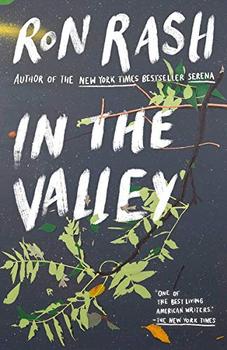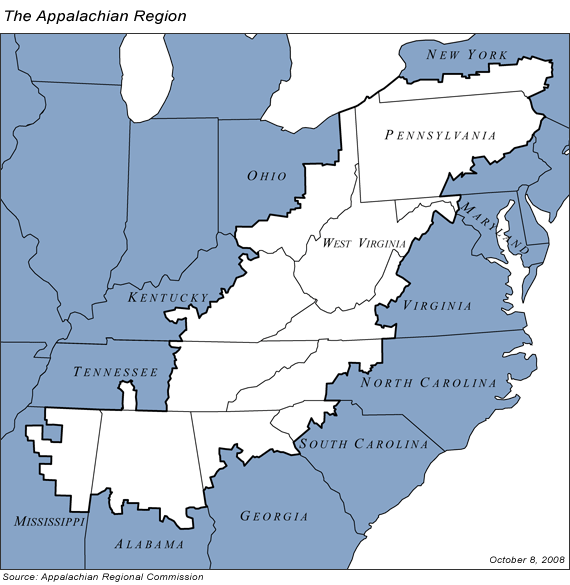Summary | Excerpt | Reviews | Beyond the Book | Read-Alikes | Genres & Themes | Author Bio

Critics' Opinion:
Readers' Opinion:
First Published:
Aug 2020, 240 pages
Paperback:
Jul 2021, 240 pages
 Book Reviewed by:
Book Reviewed by:
Kelly Hydrick
Buy This Book
This article relates to In the Valley
 The Appalachian region of the United States (not to be confused with the entirety of the Appalachian Mountains, which extend into Canada) stretches over 1,000 miles from southern New York to northeastern Mississippi. A mountainous crossroads, the area is defined by disparities and variety in its history, economics and culture. Today, it is home to more than 25 million people.
The Appalachian region of the United States (not to be confused with the entirety of the Appalachian Mountains, which extend into Canada) stretches over 1,000 miles from southern New York to northeastern Mississippi. A mountainous crossroads, the area is defined by disparities and variety in its history, economics and culture. Today, it is home to more than 25 million people.
The first humans to live in Appalachia were hunter-gatherers that entered the region more than 12,000 years ago. Farming eventually led to the development of complex agrarian societies. Before European settlement, the Cherokee people had many villages throughout Southern Appalachia. Spanish explorers encountered the Cherokees as they made incursions into the area in the mid-16th century. The name "Appalachian" is believed by some to have been derived from a Native village belonging to the Apalachee people (near today's Tallahassee, Florida), which the Spanish transcribed as "Apalachen" and may have applied to the region above it as they made their way further north. During the 17th and 18th centuries, European and Native groups engaged in trade in the area, but conflicts also erupted between them, and Native societies were decimated by European diseases.
European colonization of the Appalachian region began in earnest in the 18th century, and continued into the 19th century. British and Germans moved into the area along with free and enslaved Africans. In this early period of settlement, Native, Black and white people lived close to one another and multiracial and multiethnic communities formed. As more and more outsiders arrived, Natives were compelled to sign treaties, ceding their land to white settlers. In the 1830s, after decades of forced treaties, the majority of the Cherokees and other Natives in southern Appalachia were forced to move from their ancestral homes to lands west of the Mississippi river in the relocations known as the Trail of Tears.
The settlers of the Appalachian region mostly engaged in small-scale farming and raising of livestock and were often effectively cut off from lowland communities by the rugged mountainous terrain as well as the lack of infrastructure. This physical division widened the cultural and economic gap between those in the area and those living closer to the coast while at the same time cultivating a backcountry, do-it-yourself ethos. During the Civil War, Appalachia was a patchwork of support for the Confederacy and the Union. Some southern Appalachian communities and residents resented the wealthy slave-owners of the lowlands and so supported the Union. The Civil War exacerbated the region's mistrust of outside governmental influence, as both the Union and Confederate armies engaged in widespread destruction and violence there, something that Ron Rash's story "Neighbors" from In the Valley illustrates to great effect.
In the decades after the Civil War, coal and lumber extraction fueled economic booms in Appalachia. During the early 20th century, government and private conservationists began working to preserve the area's wilderness, creating Great Smoky Mountains National Park, Shenandoah National Park and the Appalachian Trail. Although large tracts of land were preserved as conservation areas, clear-cutting and mining caused widespread environmental degradation that the region still grapples with today. In addition, many places were poverty stricken due to the eventual mechanization of mining, which led to job losses. Appalachia continues to struggle with poverty rates higher than the national average, although concerted efforts have been made since the 1960s to diversify the region's economy. Today, the area boasts many universities and a burgeoning IT sector, as well as manufacturing and service industry jobs.
Although negative stereotypes of the region have been present from at least the late 19th century, its diverse cultural past is evidenced by Cherokee, European and African American influences on local traditions, along with its music, such as the mountain blues of Etta Baker, and stories of regional heroes like John Henry and Davy Crockett. Many communities now hold annual mountain festivals in order to showcase their rich heritage, celebrating everything from environmental movements to historical events, music and dance, and storytelling.
Appalachian Region Map from the Appalachian Regional Commission
Filed under Places, Cultures & Identities
![]() This "beyond the book article" relates to In the Valley. It originally ran in August 2020 and has been updated for the
July 2021 paperback edition.
Go to magazine.
This "beyond the book article" relates to In the Valley. It originally ran in August 2020 and has been updated for the
July 2021 paperback edition.
Go to magazine.





The House on Biscayne Bay
by Chanel Cleeton
As death stalks a gothic mansion in Miami, the lives of two women intertwine as the past and present collide.

The Flower Sisters
by Michelle Collins Anderson
From the new Fannie Flagg of the Ozarks, a richly-woven story of family, forgiveness, and reinvention.

The Funeral Cryer by Wenyan Lu
Debut novelist Wenyan Lu brings us this witty yet profound story about one woman's midlife reawakening in contemporary rural China.
Your guide toexceptional books
BookBrowse seeks out and recommends the best in contemporary fiction and nonfiction—books that not only engage and entertain but also deepen our understanding of ourselves and the world around us.